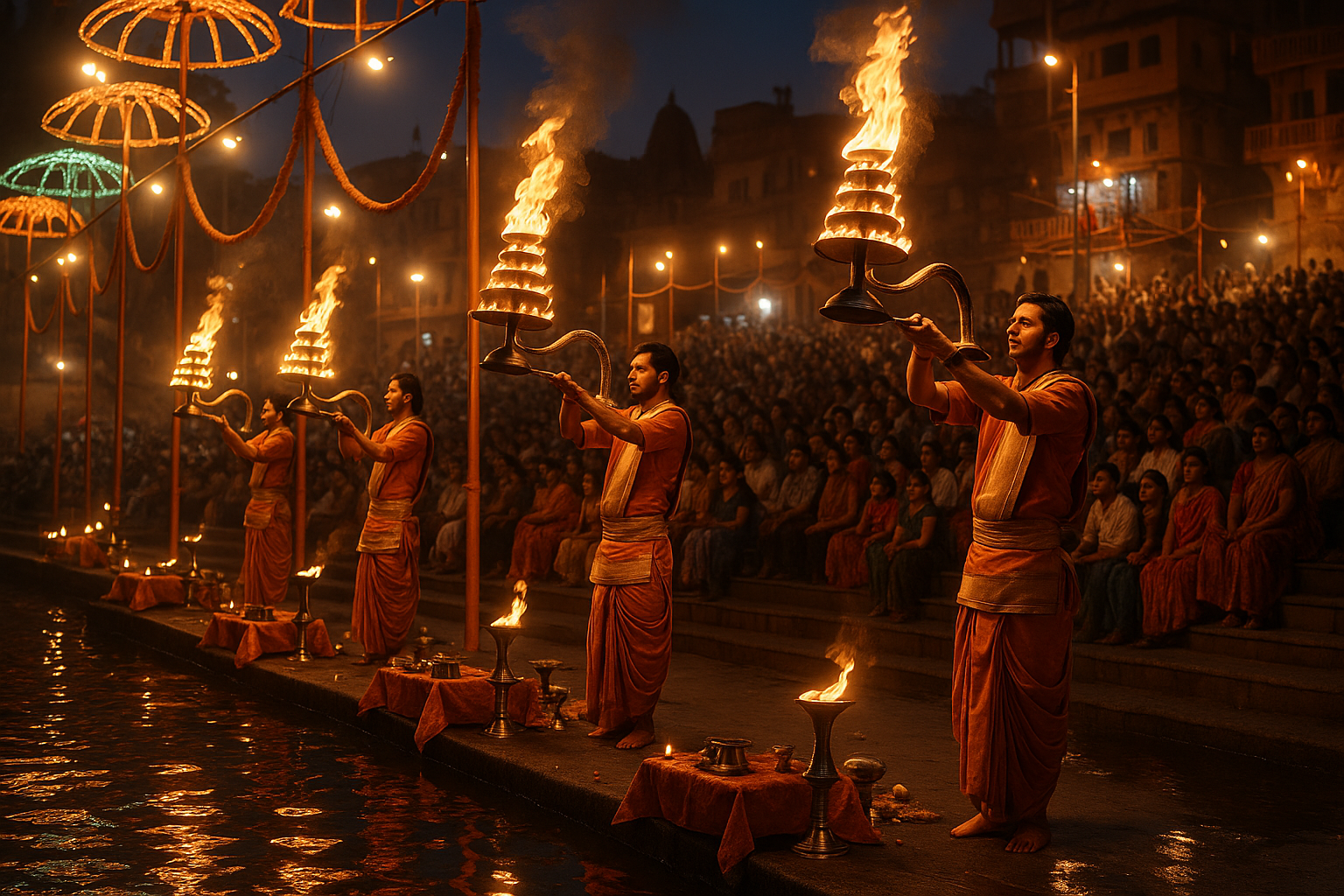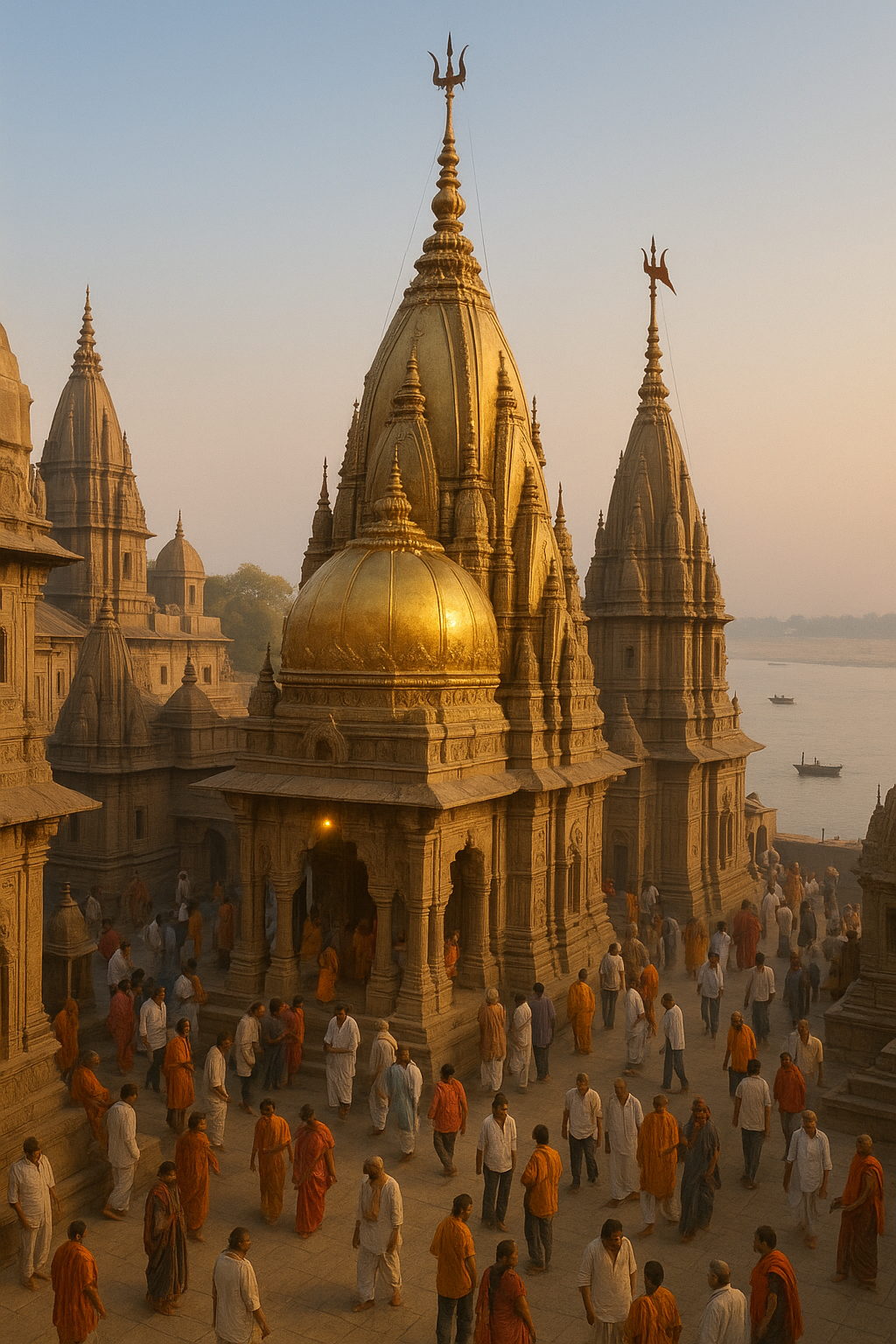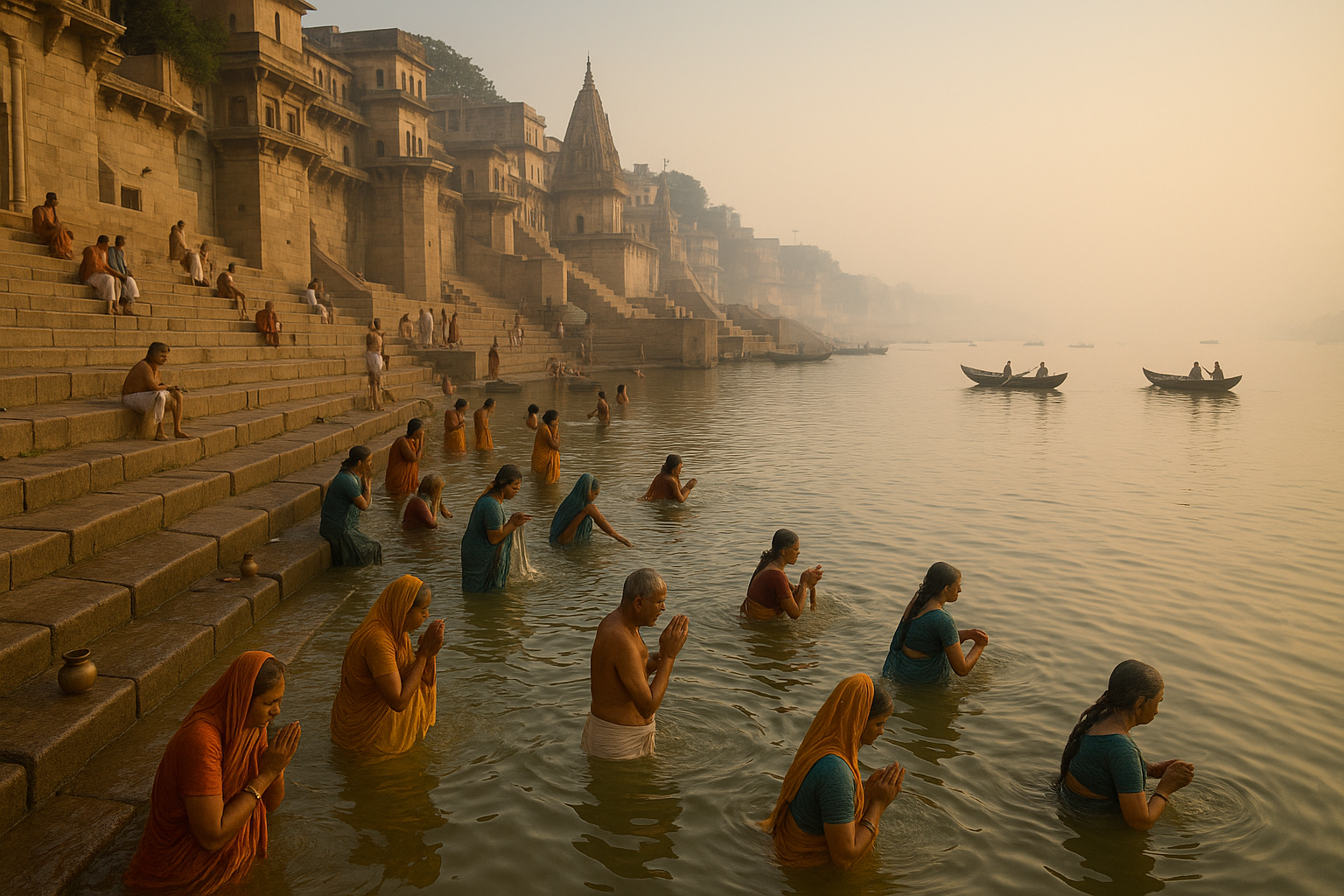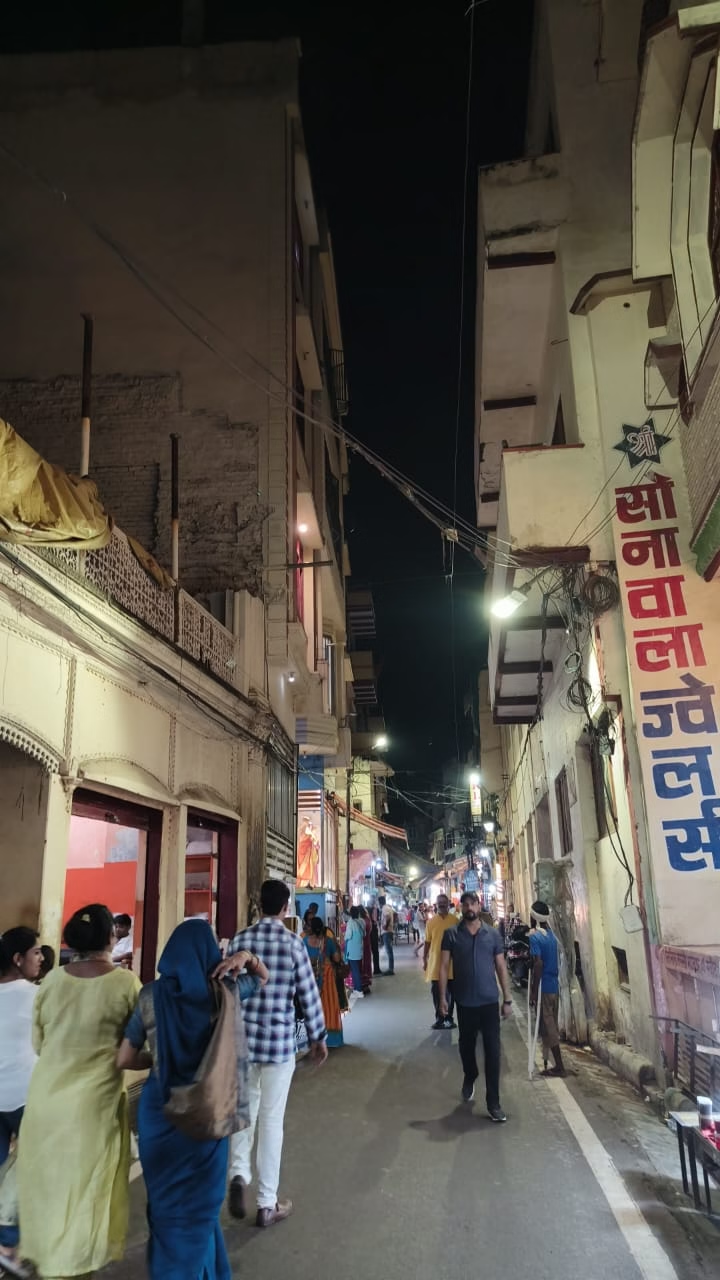
Why Kaal Bhairav Matters in Varanasi
Kaal Bhairav embodies time (Kaal) and fearlessness. In Varanasi’s sacred tapestry, he safeguards dharma, removes obstacles, and punishes adharma. Devotees traditionally seek his permission and protection before undertaking spiritual practices, yatras, or important endeavors in Kashi.
Spiritual Significance
- Guardian deity of Kashi; protector of pilgrims and the city
- Bestower of fearlessness, discipline, and resolve
- Venerated by Shaiva, Tantrik, and household devotees alike
- Often visited before other Kashi temples in certain traditions
Who Should Visit
- Seekers desiring protection from negativity
- Entrepreneurs and professionals seeking decisiveness
- Spiritual practitioners commencing sadhana
- Anyone beginning a significant life chapter
Temple Overview
The Kaal Bhairav Temple sits within Varanasi’s old-city lanes (near Visheshwarganj/Chauk). The sanctum traditionally houses a silver mask (mukha) of Kaal Bhairav adorned with symbolic skull motifs, representing the destruction of ego and ignorance.
Legend & Mythology
Shaiva lore says when Brahma’s ego swelled, Shiva manifested as Bhairava to restore cosmic order. In Kashi, Kaal Bhairav is the cosmic sentinel. Those who receive his grace are believed to transcend fear of death and time—aligning with Kashi’s promise of moksha.
Darshan Timings & Rituals
General Timings (typical)
- Early Morning Aarti: approx. 4:30–5:30 AM
- Darshan: early morning to late night (midday breaks possible)
- Evening Aarti: around sunset
Timings vary on festivals and special days. Early morning/evening is typically calmer.
Offerings (Bhog & Puja)
- Mustard oil, black til (sesame), black cloth
- Garlands, flowers (especially red), incense
- Coconut and sweets (as prasad)
Local priests can guide a simple sankalp and puja. Maintain decorum and follow queues.
Best Time to Visit
- Season: November–March for pleasant weather
- Time of day: Early morning or late evening for serene darshan
- Occasions: Ashtami, Mahashivratri, Navratri, Mondays (expect larger crowds)
How to Reach
- By Air: Lal Bahadur Shastri International Airport (VNS); ~50–70 minutes to old city (traffic dependent)
- By Train: Varanasi Junction (BSB) / Varanasi City; take auto/cycle rickshaw to nearby chowks, then walk
- By Road: Cabs/auto-rickshaws to Visheshwarganj/Chauk; proceed on foot through lanes

What to Expect During Your Visit
- Vibrant lanes: Incense, bells, mantras—an immersive sacred ambiance
- Queues: Be patient and follow instructions from staff/priests
- Offerings: Buy from nearby stalls; confirm prices in advance
- Prasad: Receive respectfully and share with care
Do’s and Don’ts
Do’s
- Dress modestly (shoulders/knees covered)
- Keep valuables minimal; phones on silent
- Respect queues and priestly directions
- Purchase offerings from reputed vendors
Don’ts
- Don’t push or skip lines
- Don’t photograph where prohibited
- Don’t litter; use bins provided
- Don’t entertain touts promising shortcuts
Nearby Places to Visit
- Kashi Vishwanath Temple & Corridor: Spiritual heart of Varanasi
- Dashashwamedh Ghat: Evening Ganga Aarti spectacle
- Manikarnika Ghat: Sacred cremation ghat symbolizing moksha
- Assi Ghat: Subah-e-Banaras morning aarti and yoga
- Sankat Mochan Temple: Beloved shrine of Lord Hanuman
- Sarnath (10–12 km): Buddhist heritage—Dhamek Stupa, museum, viharas
Festivals & Special Days
On Ashtami, Mahashivratri, Navratri, and sacred Mondays, crowds swell and the temple ambiance becomes especially charged. Arrive early and plan extra time for darshan.

Suggested Short Itinerary (Half Day)
- Sunrise boat ride on the Ganges
- Darshan at Kaal Bhairav Temple (early morning slot)
- Walk through Vishwanath Gali for prasad, chai, and temple shopping
- Visit Kashi Vishwanath Temple (respect entry norms)
- Breakfast at a reputed local eatery (try Banarasi lassi/puri-sabzi)
Frequently Asked Questions (FAQs)
Is non-Hindu entry allowed?
Darshan is generally open to respectful visitors, but some inner areas in certain Varanasi shrines can have restrictions. Follow on-site instructions.
What should I offer?
Traditional offerings include mustard oil, black til, black cloth, flowers, incense, coconuts, and sweets. Keep it simple and purchase from reputed stalls.
How crowded is it?
Mornings/evenings are popular; festivals draw heavy footfall. Arrive early, travel light, and keep essentials handy.
Is photography allowed?
Usually not near the sanctum. Obey signage and priest guidance. Be mindful and respectful when photographing outside.
Practical Tips for a Smooth Visit
- Carry a small cloth bag for footwear/offerings
- Stay hydrated; summers can be intense
- Use UPI/cash for small transactions; keep change
- Lower your voice within temple premises
- Club darshan with nearby shrines/ghats to optimize time
Conclusion: Invoke Courage, Embrace Grace
The Kaal Bhairav Temple is more than a historic shrine; it is an encounter with fearlessness and inner strength. For devotees and travelers alike, darshan here completes the Kashi experience—invoking protection, discipline, and the courage to walk the path of dharma.














1 Comment
[…] Also Read: Get to know Kaal Bhairav temple Varanasi […]